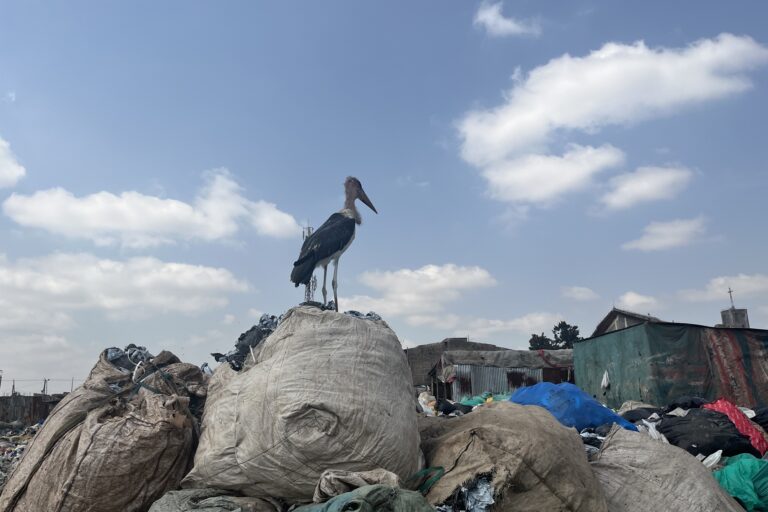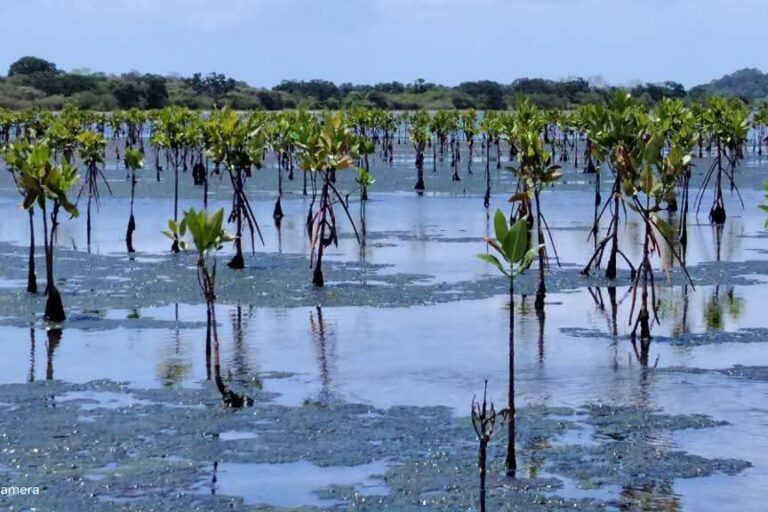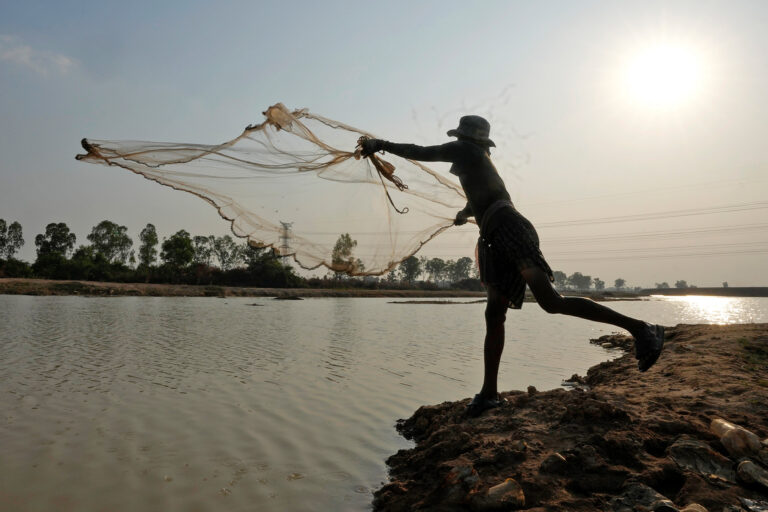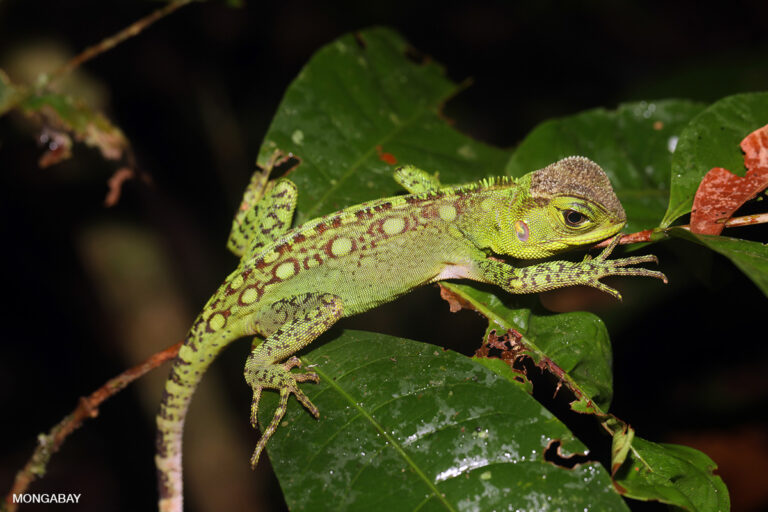Second “uncontacted” tribe in Amazon rain forest threatened by loggers
Reuters
May 27, 2005 [note: more recent stories on uncontacted tribes in the Amazon]
UPDATES:
Photos of spear-wielding uncontacted tribe in the Amazon rainforest May 30, 2008
Uncontacted Amazon tribe spotted by plane in Peru October 21, 2007
Unknown tribe found in the Amazon June 4, 2007
PORTO VELHO, Brazil (Reuters) — A Brazilian Indian tribe armed with bows and arrows and unseen for years has been spotted in a remote Amazon region where clashes with illegal loggers are threatening its existence.

KAIAPO MOTHER AND CHILD. PHOTO BY SUE WREN.
Uncontacted Amazon tribe spotted by plane in Peru (October 21, 2007) A group of uncontacted indigenous tribesmen were spotted by plane in a remote part of the Peruvian Amazon last month, according to Survival International. The region is threatened by illegal mahogany loggers.
Amazon natives use Google Earth, GPS to protect forest home (November 14, 2006) Deep in the most remote jungles of South America, Amazon Indians (Amerindians) are using Google Earth, Global Positioning System (GPS) mapping, and other technologies to protect their fast-dwindling home. Tribes in Suriname, Brazil, and Colombia are combining their traditional knowledge of the rainforest with Western technology to conserve forests and maintain ties to their history and cultural traditions, which include profound knowledge of the forest ecosystem and medicinal plants. Helping them is the Amazon Conservation Team (ACT), a nonprofit organization working with indigenous people to conserve biodiversity, health, and culture in South American rainforests. Amazon Stonehenge suggests advanced ancient rainforest culture (May 14, 2006) The discovery of an ancient astrological observatory in Brazil lends support to the theory that the Amazon rainforest was once home to advanced cultures and large sedentary populations of people. Besides the well-known empires of the Inca and their predecessors, millions of people once lived in the forests and shaped the environment to suit their own needs. Second “uncontacted” tribe in Amazon rain forest threatened by loggers (May 26, 2005) PORTO VELHO, Brazil (Reuters) — A Brazilian Indian tribe armed with bows and arrows and unseen for years has been spotted in a remote Amazon region where clashes with illegal loggers are threatening its existence. |
The tiny Jururei tribe numbers only eight to 10 members, and is the second “uncontacted” group to be threatened by loggers this month, after a judge approved cutting in an area of the jungle called Rio Pardo.
Accelerating rainforest destruction threatens the tribes. Deforestation in 2003-04 totaled 10,088 square miles (26,130 sq km), the most in nearly a decade, official figures show.
“The Indians have had conflict with loggers, who are cutting toward them from two different directions,” Rogerio Vargas Motta, director of the Pacaas Novos national park, told Reuters.
He photographed Jururei huts on a recent helicopter flyover of the remote park to catch land grabbers.
One Jururei shot three arrows at the helicopter as it flew overhead, Vargas Motta said.
The tribe’s wood huts have roofs of black plastic tarps found in abandoned logging camps.
Indian rights activists are alarmed.
“Unless Brazil acts now to protect uncontacted tribes, they will disappear off the face of the earth forever. The annihilation of a tribe, however small, is genocide,” said Fiona Watson, Campaigns Coordinator of Survival International in London.
They blame a lack of political will and a powerful lobby of cattle ranchers and soybean farmers for fueling deforestation and threatening Brazil’s 700,000 Indians.
“There’s been a grave lack of funding for conservation on the part of the government,” said Samuel Vieira Cruz, director of Kaninde, a nonprofit group that works to protect two Indian tribes in the area.
Booby traps discovered
In the most recent scuffles, Jururei Indians set booby traps with spikes, piercing the foot of one logger. Loggers are within three miles (5 km) of Indian camps.
Despite the conflicts with outsiders, Indian experts consider the Jururei “uncontacted” because anthropologists have yet to reach and study the tribe and the government has yet to establish ongoing peaceful communication with it.
Sydney Possuelo, director of the uncontacted tribes department at the government’s Indian agency Funai, said it has been years, probably at least a decade, since officials have seen the Jururei.
He said the government’s environmental protection agency, Ibama, has yet to formally inform him of the latest sighting, though neighboring tribes routinely mention signs of their existence. In general, Funai avoids making contact with unknown tribes that are ostensibly protected on reservations, so as to avoid altering their lives or passing diseases.
In other cases, the government tries to make contact when Indians are threatened on unprotected lands or when tribes are tiny and isolated, he said.
Possuelo has teams roaming the Amazon trying to make contact with isolated tribes in need of protection, but he is understaffed and many tribes, like the Jururei, are nomadic or move periodically.
“We have great difficulty because the government does not see our needs for human resources and money,” he said.
That also makes policing park borders difficult and he said “Indian lands are full of invaders.”
Though in 1994 the government mapped land based on evidence of the tribe’s presence, the Jururei have run away from government officials during attempts to contact them.
A translator spoke for several minutes with some Jururei in 1986 before they disappeared into the jungle.
Vieira Cruz said there are as many as eight uncontacted tribes in Rondonia state. Vargas Motta thinks there are three other tribes in and around his park.
Vargas Motta’s 1.89 million acre (764,000 hectare) park sits inside the 4.61 million acre (1.87 million hectare) Uru-eu-au-au Indian reserve, an area the size of a small European country, with hard-to-police boundaries.
(c) 2005 Reuters News Service













